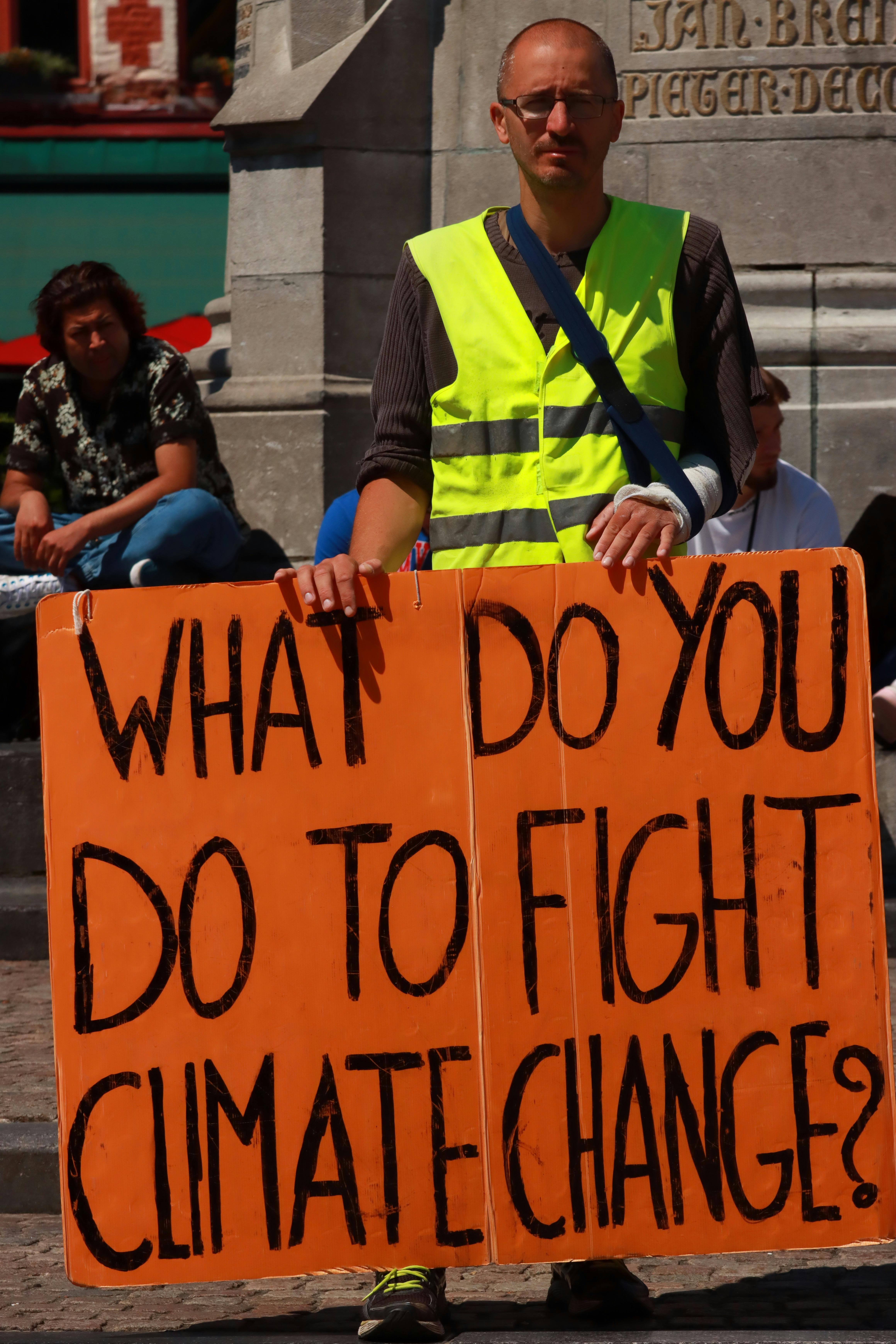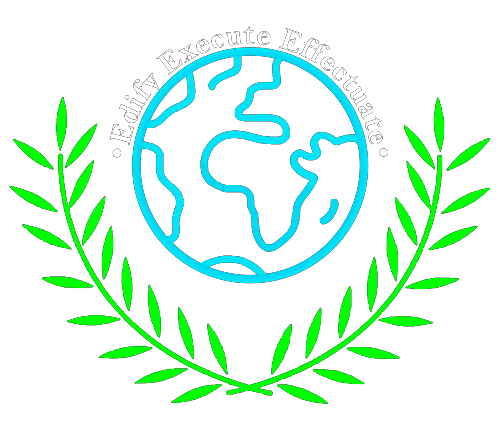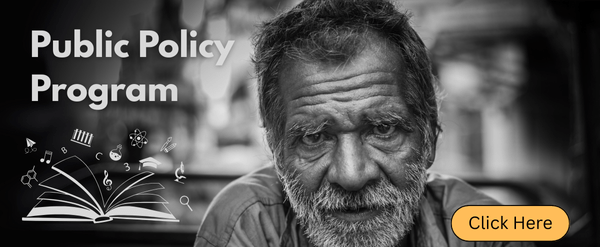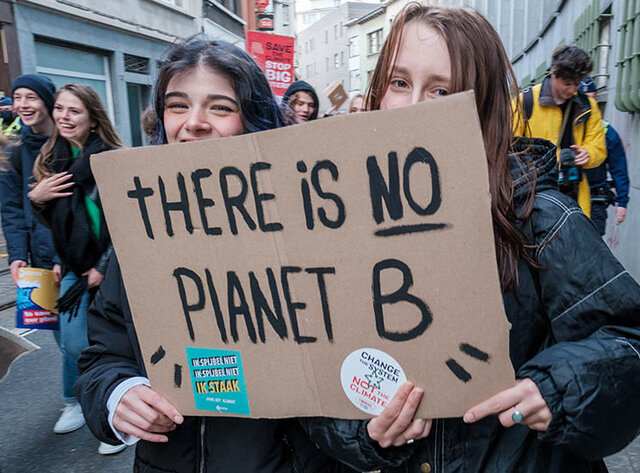FOUNDATIONS OF CLIMATE POLICY
– Dhwanii Pandit, Adithyan. P, Zainab Fatima, Edwiga Joiel Nelson, Asmeet Kaur

Introduction
Climate change is no longer a distant threat but a pressing reality with profound implications for economies, societies, and ecosystems. As global temperatures rise, extreme weather events, sea level rise, and biodiversity loss are becoming increasingly common. The challenge is clear: addressing climate change requires an integrated approach that synergizes economic, social, and environmental policies. Efforts like the Paris Agreement provide a unifying framework, fostering international cooperation and locally driven solutions to combat the crisis. (United Nations Framework Convention on Climate Change (UNFCCC), 2015). However, while global collaboration remains indispensable, addressing localized vulnerabilities, especially in urban centres prone to disasters like flooding and heatwaves, is equally critical (Brown, 2020). Policies must incorporate equity, sustainability, and resilience to ensure inclusive growth and minimize climate-related disruptions. From innovative disaster management models in India to the renewable energy revolution in the European Union (EU), diverse strategies are lighting the path toward a more sustainable and equitable future.
Global Commitments: Role of Agreements Like the Paris Agreement in Shaping Policy Frameworks.
The intricate dynamics of climate change, marked by elevated global surface temperatures and more catastrophic natural disasters, demand an innovative, adaptive, and proactive approach to policy formulation (Intergovernmental Panel on Climate Change (IPCC), 2018). The function of public policy goes beyond conventional bounds, necessitating an integrated strategy that takes social equity, economic feasibility, and environmental stewardship into account (Stern, 2015). Furthermore, policies should also address urban-specific issues and encourage sustainable urbanization since urban areas are focal sites of climate effect (Brown, 2020). Since no nation can successfully handle climate change individually, global collaboration and integrated methods are essential to address the issue more effectively.
Global collaboration on climate policy has been facilitated by various international efforts like the Paris Agreement and the Kyoto Protocol. With the ambitious aim of keeping global warming well below 2°C over pre-industrial levels, the 2015 Paris Agreement is the foundation of international climate policy, uniting 196 countries in the battle against climate change. Moreover, the inclusion of nationally determined contributions (NDCs), wherein countries pledge to lowering their emissions and enhance climate resilience, emphasizes the relevance of the agreement in addressing climate change (United Nations Framework Convention on Climate Change (UNFCCC), 2015).
Countries with strong political will and strong institutional frameworks like China, Japan, and European Union (EU) ratifying the Paris Agreement have demonstrated a stronger commitment to greenhouse gas emission reduction, sustainability, and renewable energy. However, despite these agreements being a key milestone in global climate change policy, greater attention is required based on cooperation in countries that are developing and vulnerable. Furthermore, even though the Paris Agreement gives nations flexibility and transparency in determining their climate change goals, problems like incorporation of enforcement mechanisms, financial assistance to developing nations, and geographic disparities still need to be addressed consistently.
Overall, by offering a shared framework and establishing challenging goals, international agreements have been instrumental in bringing climate action and environmental sustainability into the mainstream of national and international agendas, igniting global efforts to build a more resilient and sustainable future for all (Izuchukwu et al., 2024).
Public Policy’s role in addressing climate change through proactive and adaptive measures
The global mean surface temperature is now almost 1.5°C above the preindustrial levels, which poses detrimental consequences for humans and natural systems. The role of policy, in this regard, transcends mere responsive mechanisms; it encapsulates a proactive stance towards environmental steward and social resilience (Owen, 2018).
“Adaptation can be an afterthought of development. Instead, integrating it into policy making can catalyze robust economic growth with protection of vulnerable”.
-Stephane Hallegate
Policy makers have now recognized the need to integrate thinking about climate change into all areas of public policy making (Urwin and Jordan 2008).
The complexities inherent in climate change necessitate policies that are both, flexible & robust, capable of addressing a range of environmental and social challenges (Ostrom, 2010). The intergovernmental initiatives, such as the Kyoto Protocol and the Paris Agreement, have laid the groundwork for international cooperation in climate policy (UNFCCC, 2015), yet the translation of these global commitments into national and local policies remains a daunting task (Biesbroek et al., 2010).
Today, the countries are taking up localized population participation along with partnerships with NGOs and civil societies in combating climate change.
Prominent path taken up is building resilience to disaster management. The results of rapidly changing climate are everywhere to be seen. From landslides to cyclones, the most impacted are the people and infrastructure. Hence, adopting a quick & efficient disaster management model is what countries are aiming for. In India, Odisha’s disaster management model has been even appreciated by the UNFCCC. Secondly, carbon pricing is a prominent model. Today, the governments have become increasingly aware of the carbon footprints, hence they have started putting restrictions on the carbon usage. The European
Union’s Carbon Border Adjustment Mechanism CBAM introduced in 2023 puts tariff on carbon intensive products. It is intended to lower the carbon emissions.
Thirdly, the most immediate measure which the countries are adopting is to revise land use plans. Land use change has affected almost “a third” of the world’s terrain since 1960’s. Switzerland’s land use environmental law makes it the responsibility of local governments to ensure soil fertility (World Bank, 2020).
Multidisciplinary approach is another step that has been involved. Several stakeholders are engaged in the public policy making today, from sociologists to scientists, all of them apply the arts & sciences of their disciplines to combat climate change. However, it must be kept in minds of the policy makers that there is no single bullet to prevent climate change.
Urban Centres and Resilience : Developing Urban-Specific Policies to Combat Climate Impacts.
The United Nation defines Urbanization as “A complex socio-economic process that transforms the built environment, converting rural into urban settlements, while also shifting the spatial distribution of a population from rural to urban areas”. While urbanization fosters social, economic and technological development it also alters the demographic and social structure of a country and may also affect the environment adversely. Improper urban planning and lack of knowledge of population trends perpetuate spatial inequalities and becomes a major hindrance in the natural cycle. As compared to rural areas urban areas are experiencing more temperature variation because of a phenomenon called the urban heat island effect of 1o-7o Fahrenheit (U.S. Environmental Protection Agency (EPA), 2014). Globally, cities like Nairobi and Kenya faced extreme temperature variations and shifts in the pattern of rainfall that have affected the local ecosystem due to its high rate of urbanization (Kenya Meteorological Department, 2023), similarly in Jakarta, Indonesia experienced flooding due to water mismanagement largely attributed to urban sprawl (United Nations Framework Convention on Climate Change (UNFCC), 2023). The major factors that cause urbanization are migration and population for example the influx of people from Myanmar into Indian states like Mizoram, Manipur and Nagaland has significantly increased climate risk due to overuse of exhaustible resources, deforestation and greenhouse gas emissions (Refugees International, 2023; Mixed Migration Centre, 2024). These examples underscore that while urbanization can spur economic growth of a country it also makes a country more susceptible to climate change. India’s Paris Agreement targets to reduce emissions by 45% of its GDP by 2030 from 2005 levels (Press Information Bureau, 2023) despite the national as well as the state level efforts urban planners lack the tools and needs to make wise choices keeping in view the climate change impacts. In order to solve societal concerns in the areas of risk management, ecosystem restoration, climate change adaptation and sustainable urbanization several countries adopted resilience strategies to combat the increasing risk of climate change in the ways described in table 1.1.
|
City |
Resilience Strategy |
Climate Risk |
Population Affected (Millions) |
|
Singapore |
Rooftop Gardens |
Heatwaves |
1.0 |
|
Mumbai |
Flood Barriers |
Monsoon Flooding |
12.5 |
|
Copenhagen |
Flood-Storage Parks |
Flooding |
1.3 |
|
New York |
Early-Warning System |
Hurricanes |
8.5 |
|
Tokyo |
Earthquake-resistant buildings |
Earthquakes |
14.0 |
Table 1.1 Urban resilience strategies adopted by the following countries and states to overcome climate change. [(A handbook on developing sustainable highrise gardens, n.d); (C40 cities, 2015); (Hurricane Safety, 2024); (E-Housing, 2024)]
By adopting several such resilience strategies one could reduce the risk of climate change without impacting their socio-economic growth and in turn become an example for future generations, startups in the fields of urban planning and real state to come up with much greener and safer strategies without putting our planet at risk as well as move towards sustainable use of resources saving for our future generations to utilize and satisfy their own needs.
Governance and Integration: Synergizing Economic, Social, and Environmental Policies.
Climate change is not a distant threat but a defining challenge of our time, reshaping economies, altering ecosystems, and amplifying social inequalities. Its impacts are unfolding in real-time, from rising sea levels to disappearing biodiversity, demanding immediate and unified global action. Addressing this crisis isn’t just an environmental necessity—it’s a chance to redefine how we grow, thrive, and coexist sustainably on our planet.
Economically, climate-related disasters cost over $200 billion annually, disproportionately affecting developing nations reliant on agriculture (World Bank, 2022). However, transitioning to a low-carbon economy presents opportunities. Renewable energy could create 42 million jobs by 2050, as seen in India’s National Solar Mission, which drives growth while meeting renewable energy targets (International Renewable Energy Agency (IRENA), 2021).
Socially, marginalized groups face the brunt of climate impacts, deepening inequalities.
Women, children, and low-income communities are particularly vulnerable (United Nations Development Programme (UNDP), 2022). Initiatives like Bangladesh’s Cyclone Preparedness Programme, combining early warnings with community training, demonstrate the potential of education and engagement in building resilience.
Environmentally, ecosystems such as forests and wetlands act as vital carbon sinks, but deforestation and pollution erode their capacity. Restoration projects like the Bonn Challenge aim to rehabilitate degraded lands, bolstering biodiversity and livelihoods, as evidenced by Ethiopia’s successes (Chazdon et al., 2020).
Global cooperation through agreements like the Paris Accord and local action by cities such as Copenhagen exemplify effective implementation (Gehl, 2019; Intergovernmental Panel on Climate Change (IPCC), 2022). To combat climate change, we must synergize economic growth, social equity, and environmental protection. Only through collective action can we secure a resilient and sustainable future for all.
Conclusion
The intricate and multifaceted nature of climate change necessitates a paradigm shift in global policymaking, intertwining economic opportunity, social equity and environmental stewardship. International framework like Paris Agreement and localized initiatives such as disaster management models or carbon pricing policies are cornerstones of this transformation. However, some critical gaps remain, including insufficient financial assistance to vulnerable nations, lack of robust enforcement mechanisms, etc.. To build a resilient and sustainable future, global unity, innovation, and inclusivity must guide our collective action. Only by addressing these challenges at a time, we can safeguard the planet for generations to come.
References
A handbook on developing sustainable highrise gardens bringing greenery skywards contents. (n.d.). NParks. https://www.nparks.gov.sg/-/media/srg/files/handbook-1.pdf
Biesbroek, G. R., Swart, R. J., Carter, T. R., Cowan, C., Henrichs, T., Mela, H., and Rey, D. (2010). Europe adapts to climate change: Comparing national adaptation strategies. Global Environmental Change, 20(3), 440-450.
Brown, A. (2020). Urban Policy Adaptations to Climate Change: The Case of New York. Environmental Policy and Governance, 30(4), 123-135.
Chazdon, R. L., Brancalion, P. H. S., and Laestadius, L. (2020). A policy-driven approach to forest restoration. Nature Sustainability, 3(12), 103-112. https://doi.org/10.1038/s41558–020–00952
Cities100: Copenhagen – Green infrastructure prevents flooding. C40 Cities. (2015). https://www.c40.org/case-studies/cities100-copenhagen-green-infrastructure-prevents-flooding
Gehl, J. (2019). Cities for people. Island Press. https://islandpress.org/books/cities–people
Hurricane Safety. (2024). Division of Homeland Security and Emergency Services. https://www.dhses.ny.gov/hurricane–safety
Intergovernmental Panel on Climate Change. (2018). Global warming of 1.5°C: An IPCC special report on the impacts of global warming of 1.5°C above pre-industrial levels and related global greenhouse gas emission pathways, in the context of strengthening the global response to the threat of climate change, sustainable development, and efforts to eradicate poverty. https://www.ipcc.ch/sr15/
Intergovernmental Panel on Climate Change. (IPCC). (2022). Climate change 2022: Mitigation of climate change – Summary for policymakers. https://www.ipcc.ch
International Renewable Energy Agency. (IRENA). (2021). Renewable energy and jobs – Annual review 2021. https://www.irena.org
Izuchukwu, A., Asomah, J. K., and Onoh, U. C. (2024). Assessing the Impact of Global Agreements on Combating Climate Change and Advancing Sustainable Development and Global Climate Change. International Journal of Geography & Environmental Management,10(1),1-18.
Japan’s earthquake resistant buildings: A model for future architecture. E-Housing. (2024). E-Housing.jp. https://e-housing.jp/post/japans-earthquake-resistant-buildings-overview-history
Kenya Meteorological Department. (2024). State of the climate Kenya 2023. https://meteo.go.ke/sites/default/files/downloads/SoC%20Kenya%202023_1.pdf
Mixed Migration Centre. (2024). Impact of climate change on the migration and displacement dynamics of Rohingya refugees. Retrieved from https://mixedmigration.org/wp-content/uploads/2024/05/334_Research-Report-Climate-Change-Rohingya.pdf
Ostrom, E. (2010). Polycentric systems for coping with collective action and global environmental change. Global Environmental Change, 20(4), 550-557.
Owen, D. (2018). Proactive climate change policy and Urban Resilience. Urban studies, 55(15), 3345- 3360.
Press Information Bureau. (2023, April 3). India to achieve about 50 percent cumulative electric power installed capacity from non-fossil fuel-based energy resources by 2030. Government of India. https://pib.gov.in/PressReleasePage.aspx?PRID=1913467
Refugees International. (2023). Shadow of refuge: Rohingya refugees in India. https://www.refugeesinternational.org/reports-briefs/shadow-of-refuge-rohingya-refugees-in-india
Stern, N. (2015). Why are we waiting? The logic, urgency, and promise of tackling climate change. MIT Press. https://doi.org/10.7551/mitpress/10408.001.0001
United Nations Development Programme. (UNDP). (2022). Gender and climate change: Advancing gender equality in climate action. https://www.undp.org
United Nations Framework Convention on Climate Change (UNFCCC). (2023). Systems of innovation: Urban flood management strategies in Jakarta. https://unfccc.int/ttclear/misc_/StaticFiles/gnwoerk_static/TEC_NSI/b37e396ecf0b42879e91c50c75883e9/46cd95e108ae48cea7196244d2721393.pdf
United Nations Framework Convention on Climate Change. (2015). Paris Agreement. https://unfccc.int/sites/default/files/english_paris_agreement.pdf
Urwin, K., and Jordan, A. (2008). Does public policy support or undermine climate change adaptation? Exploring policy interplay across different scales of governance. Global environmental change, 18(1), 180-191.
US Environmental Protection Agency (EPA). (2024). What are heat islands?. US EPA. https://www.epa.gov/heatislands/what–are–heat–islands
World Bank. (2020, November 17). The Adaptation Principles: 6 Ways to Build Resilience to Climate Change. World Bankc. https://www.worldbank.org/en/news/feature/2020/11/17/the-adaptation-principles-6-ways-to-build-resilience-to-climate-change
World Bank. (2022). Economic impacts of climate change on developing countries. https://www.worldbank.org






4 Responses
Very informative article.
Very meticulous writing and also very insightful.
This article offers highly relevant and insightful observations, providing actionable steps towards safeguarding the continued existence of humanity on this beautiful planet.
We all bear the responsibility of comprehending the article’s core message and identifying the actions necessary to protect ourselves and future generations from the catastrophic consequences of the continually deteriorating environmental situation.
The authors deserve public commendation for their deep concern and their ability to articulate this critical message with such precision.”**
Very nicely articulated article with facts and fears.. we all are seeing the adverse effect on our climate due to various man made reasons now it becomes our responsibility as well to cure the nature cure our earth and be sensitive and careful towards our own deeds. I would like to appreciate the author for such informative article.